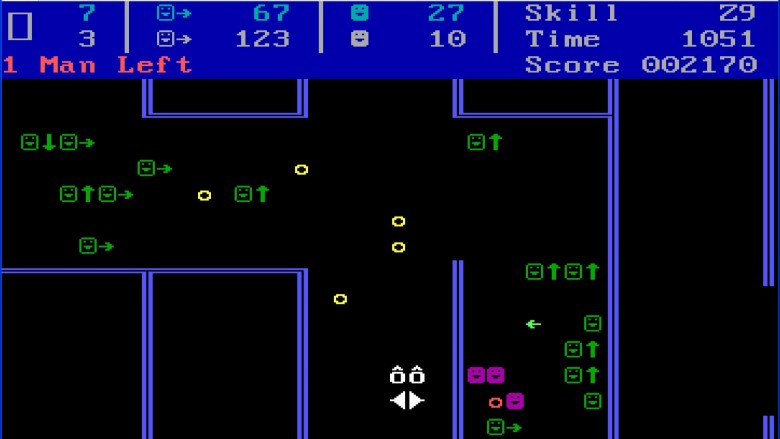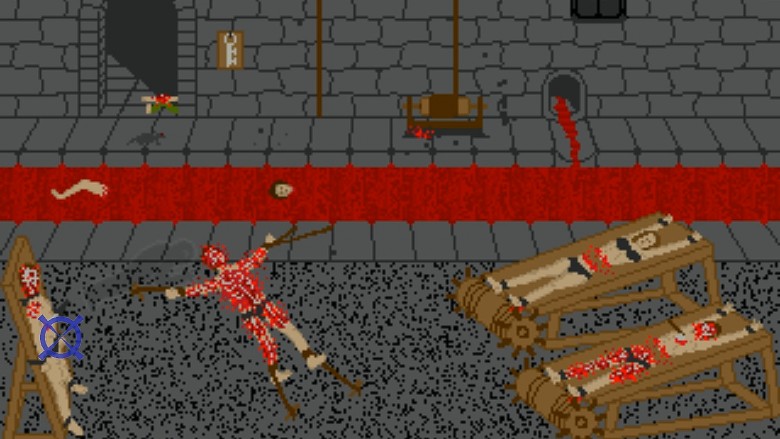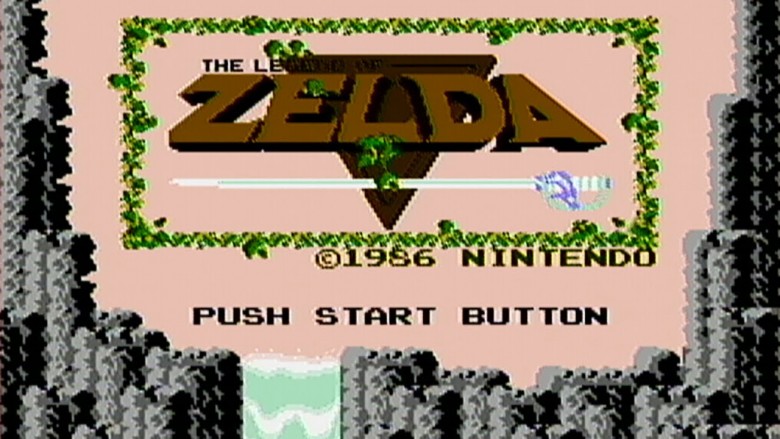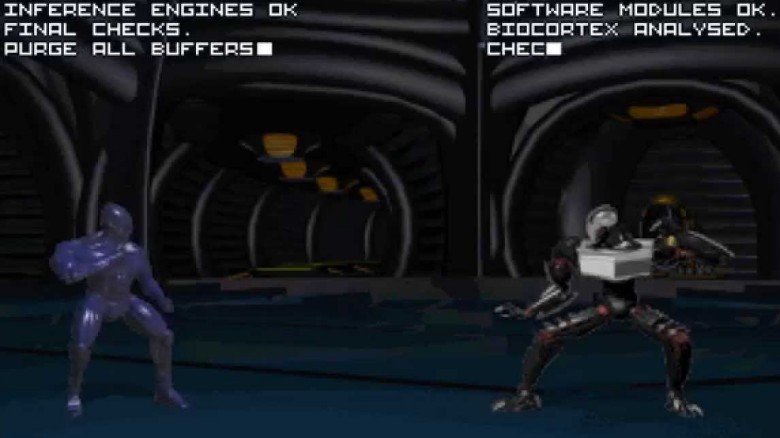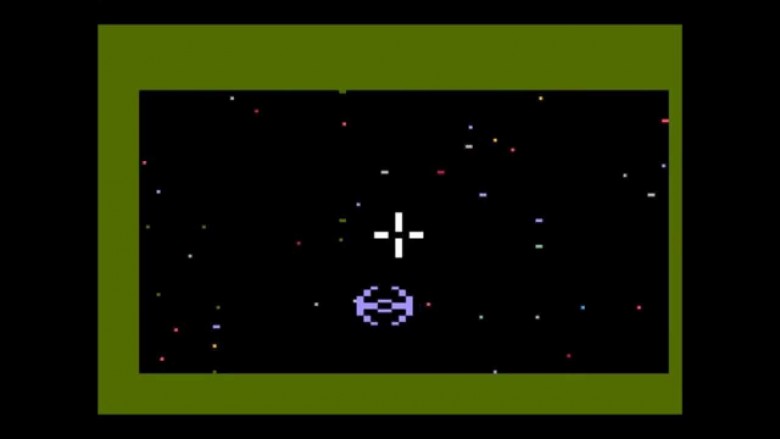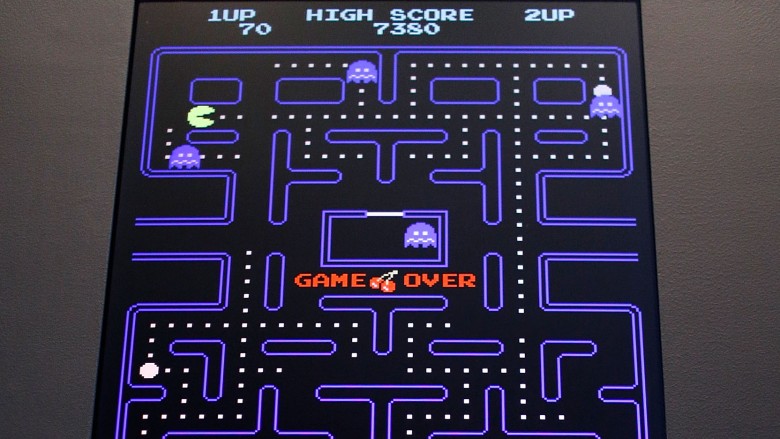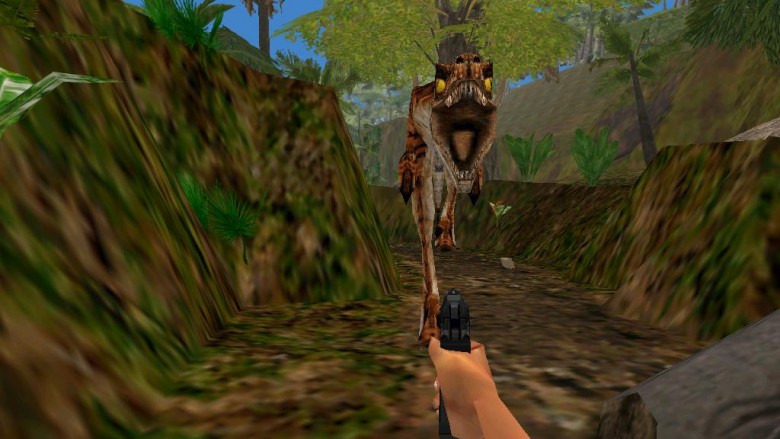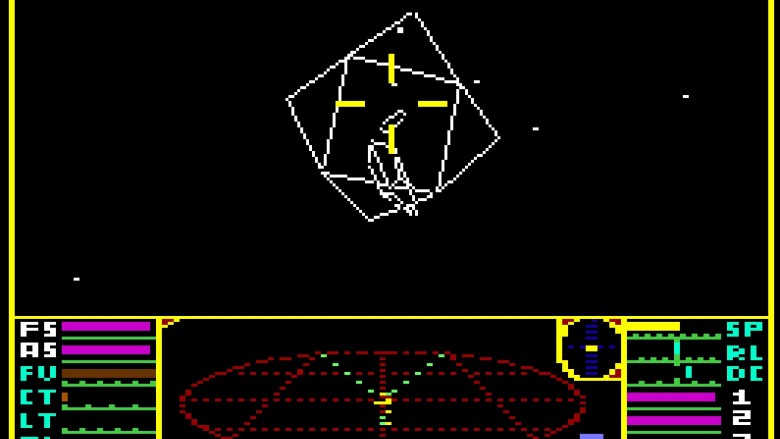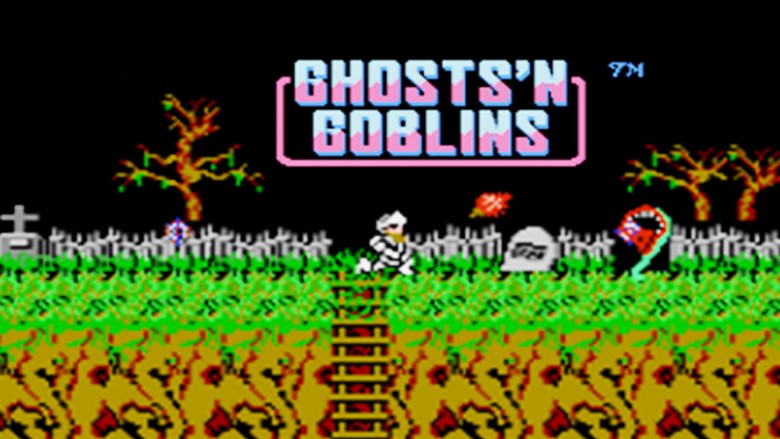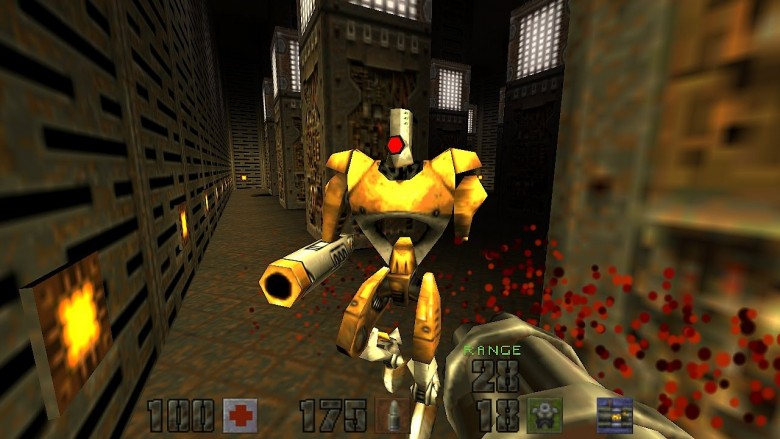10 Games That Revolutionized Gaming
While people just can't resist labeling their beloved action-adventures, first-person shooters, and 2-D side-scrollers as "revolutionary," there are a handful of titles out there that really did change the face of the gaming industry forever. Picking from a treasure trove of gore-soaked titles like Resident Evil VII might not seem all that special, and rapid-fire tapping your keyboard as you battle on an Overwatch map might feel like second nature, but where did these feature we know and love get their start? Let's rewind the clock and take a look at the titles that totally revolutionized gaming.
Snipes (1983)
Online games are a dime a dozen these days, but it was 1983's Snipes from the teensy-tiny Utah-based developer SuperSet Software that marked the very first use of networked gameplay. Snipes centered around a text narrative that led players through a web of mazes to vanquish, well, snipes (as well as various hives) and other networked opponents. According to Snipes's creator, Drew Major, the game was created to test-drive the capabilities and system aptitude of the newest tech item on the market: the IBM machine. Players could link up within Snipes in attempts to destroy the other's base, but only if they were both using personal IBM computers.
Major even commented on the magnitude of Snipes in the 1980s, saying, "[It] was the first network program written for the PC (because we'd just built the first network), and it was written as a demo to prove that there was in fact a network running and that the network was fast (it had real-time action at 18 frames a second). For a long time, like at least a year, it was the only network-aware application available for the PC."
Over three decades later, and it seems Snipes is the gaming granddad that spawned a massive, multi-faceted genre of titles ranging from the MMO Counter-Strike: Global Offensive to the colossal League of Legends to smaller-in-comparison treats such as Tera and Rift. While the graphics and gameplay are, admittedly, light years away from the hyper-realistic titles we have today, gamers owe a lot to the stripped-back Snipes.
Chiller (1986)
Raise your hand if you love getting down and dirty slaying zombies, shooting (fake) baddies in your favorite survival game, or slicing through a horde of beasts on your way to the final boss. All of you? We assumed as much.
It must be really telling about the human race that we so often (and so intensely) crave violence in our media. By the looks of it, it's the crueler, the cooler—and that's especially true for gamers. But have you ever stopped to think which game drew that fateful first blood? Well, it was the light-gun arcade game, Chiller, of course!
Released in 1986, Chiller saw players spilling red for the very first time, and the way they did it will send a fitting chill up your spine. Tossed into what appears to be an underground cellar (medieval-themed, naturally) and surrounded by the walking dead, ghastly spirits, and potential human victims, users were required to kill everything in sight. And things only got more brutal after that, with players advancing through levels like "Torture Chamber" and "Graveyard." Here, it was a horror lover's heyday: rip apart your enemies' flesh, blast away entire bones, and splatter some brains on the walls.
It might be in really low resolution and quite comical to look back on, but in concept, Chiller's dungeon makes Ramsay Bolton look like a saint. It was even banned in the U.K. and largely shunned by American arcades. By any account, gaming fans worldwide owe a ton to this ambitiously violent retro title. Without Chiller, gamers today might not get to unleash their anger in games like Grand Theft Auto, Hotline Miami, or Manhunt.
The Legend of Zelda (1986)
Bankers and gamers have the same exact mantra: save, save, save. After all, there's little worse in the gaming world than when the internet drops out, your cat crawls across your keyboard, or when something equally devastating (okay, okay, relatively devastating) happens and your screen cuts to black. Fortunately, you saved your progress just a few minutes before the "Big, Terrible Thing" occurred, so you're totally fine. And, Nintendo fan or not, you've got The Legend of Zelda to thank for that.
The '80s age of arcade titles tested players' physical and mental limits, as they were presented in an all-or-nothing style of gameplay. You either finished it in one go, or you had to leave and start over again from the beginning another time. Nintendo's 1986 release of the Legend of Zelda changed all that. Inside the game's gold-colored cartridge was an internal battery used to power up a RAM chip, a small piece of technology that sparked a revolution in gaming. Console users were able to save their progress onto this RAM chip, which meant if their dried-up eyes needed a break from a playing binge, they could save the game and easily come back.
Not only was this an innovative introduction, it also changed the face of game design as well. Knowing that fans could divvy up their playing time at will, the designer-director team of Shigeru Miyamoto and Takashi Tezuka realized they could crack open the Zelda universe to allow for more exploration and intricacy.
Imagining a reality in which you could never save a game or get lost for hours in random side quests seems nearly impossible. Though the Nintendo title was the first in a still-popular series, The Legend of Zelda is legendary first and foremost for its save feature, which, quite literally, saved the gaming world.
Rise of the Robots (1994)
Generally, when we think of motion capture, we think of Benedict Cumberbatch with a full-body tracking suit and a dot-covered face, sliding on the ground and snarling into a tiny camera attached to his forehead. (Oh, come on, you've seen those Hobbit: The Desolation of Smaug behind-the-scenes featurettes!) But the technology is actually something quite prevalent in the gaming world as well, and it all began with a lesser-known title called Rise of the Robots.
Time Warner Interactive and Mirage, the publisher and developer behind the 1994 fighting game, utilized motion capture to offer a more real-feel element to its characters. Designers Sean Naden and Sean Griffiths, along with interior designer Kwan Lee, wanted to create robots that had a full range of motion, and the team mocked up droid models and texture maps in order to give Rise of the Robots players a really good look at the cyborgs. Combine that with computer-generated sets and synthetic actors used to render in-game characters and environments, and the first instance of motion capture in video games was born, which Nader said was "just like making a movie."
In the years since Rise of the Robots's release, a slew of incredibly realistic games have hit the market. Though initial reviews of the would-be-revolutionary title were negative, claiming the gameplay was severely lacking because too much attention was paid to graphics, the Mirage-developed game kicked off a crazy new technology, paving the way for titles like 2015's Until Dawn.
Space Spartans (1982)
Solid voice-acting can make a game all the more enjoyable, truly immersing players into its world, characters, and overarching narrative. While plenty of gamers are familiar with titles that omit any real-life speech, there are a thousandfold more that boast a band of actors working their chatterboxes with acute precision. And the first game to feature authentic human voice synthesis was 1982's Space Spartans, setting a historic precedent for countless titles to come.
Let's give a little more background info and rewind to 1979, when Mattel released the second-generation games console Intellivision. As with most console systems, upon launch, Intellivision users could purchase a number of different games and a few special peripherals. The one most relevant one here is the voice synthesis device, Intellivoice, which supported, you guessed it, Space Spartans. The 1982 space combat simulation game was the first of four Intellivision titles to use the Intellivoice module that allowed for synthesized human speech to be rendered and provided in real time. Thanks to this new technology, Space Spartans was able to showcase the very first human voice in a console game.
To list all the titles that have followed in Space Spartans's moon-shoe footsteps would be an impossible feat. Nearly every video game you've ever played has featured a human voice of some sort, whether it pops up faintly in the background or right up at the forefront as your protagonist guides you through the main mission. We owe Space Spartans a massive thanks.
Pac-Man (1980)
We can almost hear you saying, "Well, duh, Pac-Man revolutionized gaming! Look at its popularity." While we definitely agree with you, smart reader, we've got something even more interesting on our minds concerning Pac-Man's legacy. Commercial success and insanely infectious theme song aside, Pac-Man was the first game to include animated cutscenes. While many attribute this gaming accomplishment to another arcade fave, 1981's Shigeru Miyamoto-helmed Donkey Kong, the arcade classic designed by Toru Iwatani did it one year earlier in May 1980.
Within Pac-Man, animated cutscenes were used to splice up gameplay in comical intermissions, refocusing the player who had likely been at the arcade machine for hours on end and resetting the game's pace. Like many Pac-Man endeavors, this revolutionary feature was also designed to offer up a few giggles. And the chuckle-worthy interludes caught on like wildfire, with games like the aforementioned Donkey Kong and Space Invaders Part II borrowing the technique shortly afterward.
Nowadays, cutscenes are the bread and butter of gameplay. They can advance characters from one area of the in-game world to the next, explain certain aspects of the narrative, and even allow players to decompress from particularly intense or emotional action sequences. Though recently some have frowned upon the function of cutscenes (we're looking at you, Half-Life developers), there's no denying Pac-Man paved the way for a game feature that millions of people absolutely adore.
Jurassic Park: Trespasser (1998)
What if we told you that Jurassic Park wasn't just impressive for its renowned film director, state-of-the-art CGI, or its theme song that quickly became an internet meme? What if we told you that it actually created some pretty big waves in the video game world? Well, prepare to have your minds blown.
Based off the monumental 1993 dino film and its 1997 sequel, Jurassic Park: Trespasser was released for Windows operating systems in 1998 and was the first game to use a brand-new technology called "ragdoll physics." Now, we know it sounds like oddly sinister children's game, but ragdoll physics is as simple as it is spectacular. The technology is a type of procedural animation that allows for improved authenticity and reduction of static in death animation. (Okay, so it's a little bit spooky. We apologize.) Prior to the introduction of ragdoll physics, when animated characters would fall to their death, they would be super rigid. But thanks to this new development, in-game characters had loose joints and virtually no skeletal stiffness, making them look a lot like, well, rag dolls. But more importantly, they appeared less like mannequins and more like humans. Jurassic Park: Trespasser was the first to replace the old-school death animations in favor of ragdoll physics, marking itself as a pioneer in gaming physics.
Today, the procedural animation technology isn't just used in grisly sequences like a character tumbling down the stairs or being shaken in the mouth of an enormous dinosaur. Now, you'll most likely see ragdoll physics at work in fight scenes. Just check out games like Call of Duty, FlatOut, and even Red Dead Redemption, titles that allow for realistic renderings and a more immersive experience. So thanks for the upgrade, Jurassic Park: Trespasser. You're a real doll.
Elite (1984)
With a name like Elite, you'd expect a game teeming with greatness. Fortunately, that's just what you get with this 1984 space trading title from writers and developers David Braben and Ian Bell. In fact, it's the first game to use procedural generation at its maximum potential. Though the technology was actually introduced a few years earlier, in 1978, in a roguelike called Beneath Apple Manor, Elite took the data-creating method and made something quite special.
Simply put, procedural generation is a computing system that automatically and algorithmically creates content rather than relying on manual design for each layer of a game's graphics. Elite showed this off in its open-world simulation and space combat, where gamers play as the galaxy-exploring, bounty-hunting Commander Jameson. While Elite isn't technically the first instance of in-game procedural generation, it is the first to use it "properly" in an expansive universe that could quickly generate brand-new interstellar worlds.
Games have since refined procedural generation to avoid mathematical algorithms tossing players off the map or launching them into some interestingly-named locations. Both the Diablo series and the Left 4 Dead franchise are known (and applauded) for their use of this technology. Even somewhat disappointing titles like No Man's Sky have been appreciated for implementing solid procedural generation, and it's a trend that continues on with games like Ark: Survival Evolved and Astroneer.
Ghosts 'n Goblins (1985)
Popularly known as "NG+," New Game Plus is a feature that allows players the best of do-overs. With NG+, if a user has a hankering to take a game for another spin upon completion (and thus make different choices or boost their score), they totally can. Even better, they don't have to worry about losing their upgrades, equipment, or experience. Sayonara to starting from scratch! However, there's a bit of confusion when it comes to the history of NG+, as most people assume the feature first popped up in Chrono Trigger , a two-dimensional RPG released in 1995. But if you want to dig way back and find the great-grandaddy of NG+, look no further than Ghosts 'n Goblins.
A 1985 side-scrolling platformer (and one of the most frustrating games ever made), Ghosts 'n Goblins was one of the earliest instances of a game utilizing a quasi-NG+ feature. After beating the game on the first try, it turns out the ending was actually an illusion, and you're forced to start over from the beginning. Even worse, on the second time around, the game was actually harder, truly testing players' skills in vanquishing otherworldly creatures. Essentially, gamers had to "beat the game twice to see the true ending," which many fans consider the marker of the "most fearsome NG+ in history." And while it was a fairly basic New Game Plus system, Ghosts 'n Goblins was the title that set up the start-over skeleton, bringing forth a feature that would alter the gaming landscape. Seriously, can you imagine losing all your progress when you wanted to start again? The horror!
Quake II (1997)
PC players, perk up. We've got an important question to ask you. Which keys do you use to control character movement? Surely not the now-archaic up/down and left/right arrows! We can bet that nearly all your beloved desktop titles require you use the "W," "A," "S," and "D" keys to navigate your spunky little protagonist around the map. We'd even go so far as to say that your left hand likely hovers over those keys instinctively when a game is booting up. But where did that begin? Which game sparked that classically-conditioned response? The answer is, of course, 1997's Quake II.
Developed by iD Software (known for hits like the original Wolfenstein and a few Doom installments), the bullets-blazing FPS game Quake II was the first to bring the lesser-used keyboard configuration to the forefront. While a lot of games prior to Quake II did offer WASD key controls as an option, it was only ever secondary. Most players didn't even know it existed, and if they did, they flat-out ignored it. The 1997 title changed the way PC users experience their games, allowing for more comfortable gameplay, as the four letter keys are much more easily accessed than the arrows. Once the gaming world as a whole caught on to the revolutionary concept, it never looked back.
Modern games feature WASD as the new norm for character movement control. It's even used as the benchmark in Blizzard Entertainment's stupendous team-based shooter Overwatch. So it's pretty safe to assume that WASD is the standard that will stick around for decades to come.


